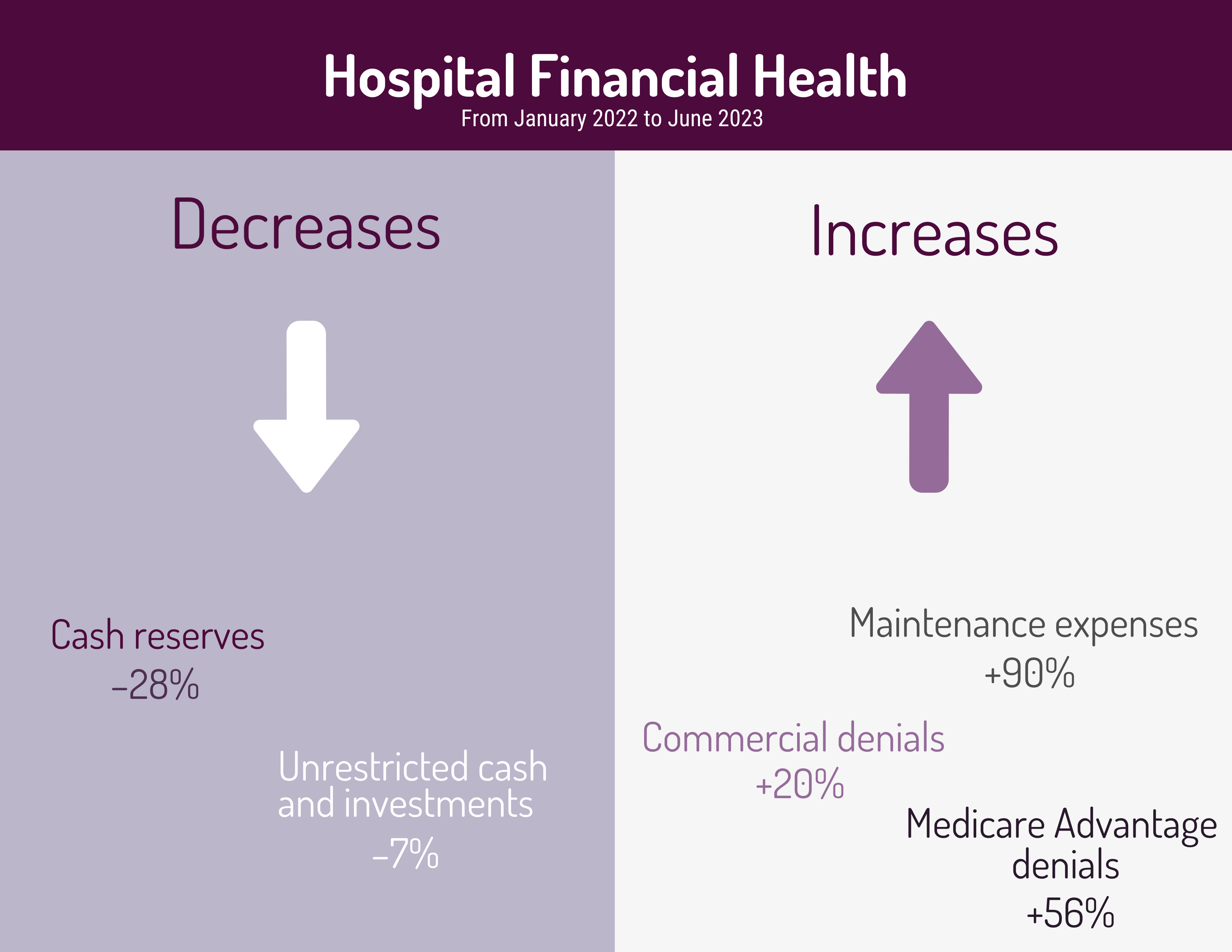Hospitals Report Declining Cash Reserves, Increasing Reimbursement Delays and Denials

[ad_1]
Hospitals are facing pressure from reimbursement delays and denials and declining cash reserves, according to a report from the American Hospital Association (AHA) and Syntellis Performance Solutions.
The combination of these 2 pressures means hospitals and health systems are “increasingly financially strapped.” The report analyzed data from a sample survey of more than 1300 hospitals and health systems.
From January 2022 to June 2023, the median health system, defined as the 50th percentile of systems, reported a drop in cash reserves of 28%. Days’ cash on hand dropped from 173 to 124 days. The declines in cash reserve were attributed to rapidly rising expenses, according to the report.
Diminishing cash reserves mean that hospitals and health systems are “less prepared to navigate sudden emergencies that may arise, such as natural disasters, mass casualty events, or another pandemic,” according to the report.
From January 2022 to June 2023, overall unrestricted cash and investments decreased 6.5% for the median health system while operating expenses increased substantially. Over the same time period, maintenance expenses increased 89.8%, followed by utilities (35.0%), professional fees (33.0%), drugs (29.8%), benefits (27.4%), total labor (24.0%), supplies (17.2%), and lease and rentals (14.6%).
According to the report, the large increase in maintenance expenses from the beginning of 2022 to mid-2023 was attributed to organizations addressing needs they had deferred during the COVID-19 pandemic.
There was a larger jump in Medicare Advantage denials than commercial denials, with the former increasing 55.7% from January 2022 to June 2023 for hospitals nationwide compared with 20.2% for commercial denials.
Click to enlarge. Data from American Hospital Association and Syntellis Performance Solutions.

In October, Crowe LLP reported that there were wide variations in denials by state. That analysis of 1800 hospitals for the first 6 months of 2023 found the average initial denial rate for the 5 states with the lowest rates was 6.7% compared with 16.0% for the 5 states with the highest denial rates. The state with the lowest initial denial rate was Iowa with 5.6% vs Oklahoma with 18.5%.
The final denial rates differed from the initial denials. Payers in the 5 states with the highest final denial rate didn’t pay nearly 7.0% of claims submitted by providers compared with 1.0% for the 5 states with the lowest final denial rate. Hawaii had the lowest final denial rate with 0.4% compared with Georgia at 10.4%.
According to the AHA and Syntellis report, delays and denials in payments have led to wide fluctuations from month to month in accounts receivable (AR)—the money hospitals are owed for services that they provided. “Over the 18-month period, hospitals experienced significant volatility in AR from commercial payers,” according to the report.
A year ago, AHA reported that half of hospitals and health systems reported $100 million in AR for claims older than 6 months, which amounted to $6.4 billion in delayed or unpaid claims among the 772 respondents.
Denials can also contribute to clinician and workforce burnout. AHA has previously reported in 2022 that physicians and their staff spend 14 hours a week on average just completing prior authorization requests. In addition, 88% of physicians had described the burden associated with prior authorizations as high or extremely high.
Syntellis and AHA noted that the issues highlighted in their report “compound reimbursement challenges from Medicare fee-for-service and Medicaid, which chronically underpay hospitals relative to the total cost of care. Taken together, a lack of proper and prompt reimbursement has both upstream impacts on hospitals’ cash flow as well as downstream impacts on patient care.”
[ad_2]
Source link
